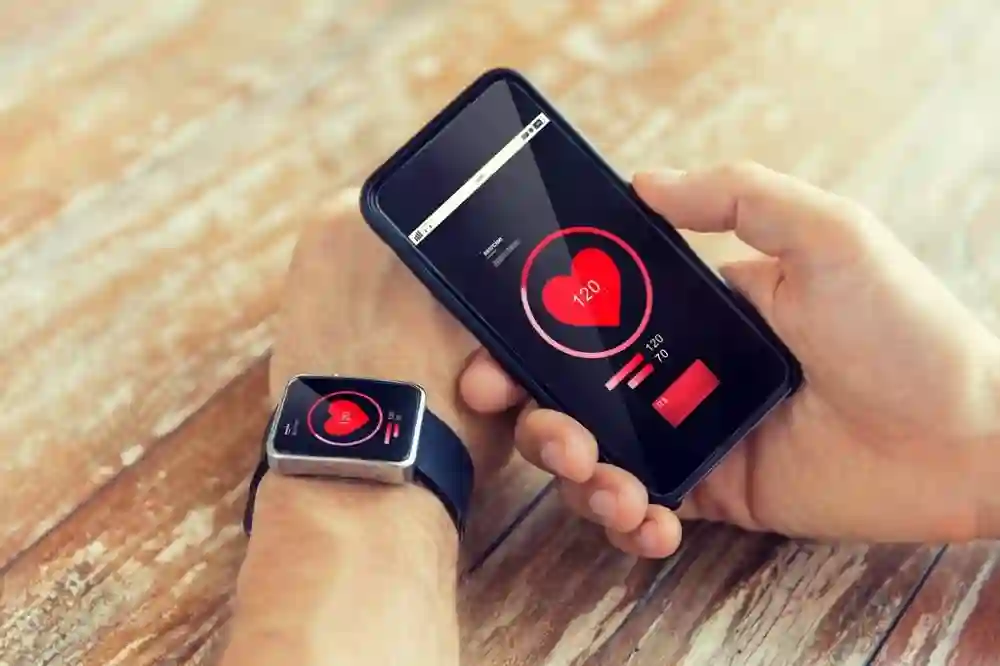Let me be real—there was a time I thought wearables were just fancy pedometers. I figured, “Cool, a watch that tells me how many steps I took while avoiding my to-do list.” But oh, I was wrong. Turns out, how wearable tech is improving health monitoring isn’t just about counting steps or tracking sleep patterns. It’s way more than that, and frankly, it’s kind of blowing my mind.
We’re talking about wristbands, rings, shirts—basically, gadgets that can tell you if your heart is about to explode (hopefully not, though) or if your blood sugar levels are doing the cha-cha. It’s like having a personal health assistant who never takes a lunch break.
The Evolution of Health Monitoring
So, back in the day, we had thermometers, blood pressure cuffs, and the occasional “how’re you feeling today” from the doctor. And if we were lucky, maybe an annual checkup. Now? It’s like a health-data explosion.
- Early wearables: Think 90s step counters (we all had one, let’s not lie).
- Mid-era: Enter the Fitbit and the first Apple Watch, which tracked your heart rate and maybe—just maybe—told you to move every 30 minutes.
- Today: Full-on, real-time health reports—blood oxygen, stress levels, ECGs. It’s like wearing a mini hospital on your wrist.
I remember the first time I tried on a fitness tracker, thinking, “This is probably gonna die in a week.” Fast forward to now, and I’m tracking everything from my sleep patterns to how stressed out I am when I’m running late for a Zoom meeting. Spoiler alert: It’s a lot.
Anyway, here’s the kicker—how wearable tech is improving health monitoring is about one thing: constant updates. No more waiting for a doctor’s appointment to find out you’ve been a little too chill with your sugar intake. It’s real-time insights, folks.
Continuous Monitoring: A Game-Changer
Remember when you’d just see your doctor once a year and pray they didn’t give you bad news? Yeah, that’s not really how things work anymore.
Now, thanks to wearables, you can track things like:
- Heart rate variability (HRV): Seriously, this tracks how your body is responding to stress. My watch told me I was stressed out after I tried to use an Ikea bookshelf for the third time (don’t ask).
- Blood oxygen (SpO2): This is like your wearable’s way of saying, “Hey, buddy, breathe.”
- Skin temperature: It might flag a fever before you even feel a thing. Trust me, when my body started acting like an oven last month, my smartwatch knew before I did. Not a fun surprise.
Fast forward past three failed attempts at fitting into my jeans—this is where the real magic happens. Wearables are making health tracking a daily thing, not just a “once every few months” affair. I can track my metrics every second of every day. No waiting. No guessing.
Chronic Disease Management at Home
Let’s talk about chronic disease management. You ever feel like managing your health is a full-time job? Well, it kinda is now—and wearables are the ultimate coworkers.
Diabetes and Glucose Monitoring
I mean, come on, finger-pricking is a thing of the past. Now, continuous glucose monitors (CGMs) do the heavy lifting. I’m not saying they’re magic, but if my mom’s CGM can track her blood sugar without her even thinking about it, it feels pretty close.
And here’s the thing—how wearable tech is improving health monitoring is HUGE for people like her who deal with diabetes. These monitors alert you when your blood sugar’s off, and that’s a game-changer. It’s like a safety net that never lets you fall too far.
Mental Health: The Quiet Revolution
It’s not all about physical health. We’ve got mental health getting the wearable treatment too. Talk about a game-changer.
Stress & Mood Detection
I don’t know about you, but some days I feel like I’m walking around with a cloud hanging over my head. Guess what? Wearables can track that. They look at your heart rate, sleep quality, and even how much you’re moving around (because, let’s face it, stress often makes us want to curl up in a ball). And the watch doesn’t lie.
I was having a particularly rough morning, and my smartwatch told me, “Yo, your HRV is dropping like it’s hot.” So, I took a break, walked around the block, and guess what? My stress levels dropped like that last minute of a good Netflix show.
How wearable tech is improving health monitoring here is subtle but incredibly effective. It’s more than just tracking fitness—it’s tracking your mental well-being too. And that’s something we all could use more of.
Sleep Tracking and Recovery
Remember the days when you didn’t need an app to track your sleep? Yeah, me neither.
Sleep Tracking
Now, sleep isn’t just about how many hours you clock in—it’s about the quality. Deep sleep. REM sleep. Light sleep. Wearables give you the lowdown, and it’s like having a personal sleep coach. I mean, sure, sometimes it’s like, “Hey, you snored for 3 hours last night,” but hey, it’s for our own good.
Here’s the kicker: Your watch knows if you’re tossing and turning or getting that deep, restorative sleep. Mine’s been trying to tell me to take it easy, and honestly, I should probably listen.
Sports Performance Meets Health Insights
This is where it gets cool.
Personalized Fitness Plans
I’m not saying I’m a professional athlete (I mean, have you seen me try to do a pushup?), but wearables make it feel like I’m one. These devices track everything from how fast you’re running to your cadence and even how efficiently you’re moving. They’ll even tell you when to slow down—because trust me, my watch knows when I’m overdoing it.
You know how wearable tech is improving health monitoring when your device sends you a text that says, “Maybe ease up on the squats for today.” It’s like having a workout buddy that’s not afraid to call you out.
Elderly Care: Subtle, Silent, Life-Saving
Alright, let’s get real. There’s a lot of love here for our elders, and wearables are showing up big-time.
Fall Detection
If you’ve ever had a loved one slip, you know how scary it can be. The fall detection feature on wearables like Apple Watch has been an absolute lifesaver for so many families. It alerts you and even calls emergency services if they detect a sudden fall. I know, it sounds like something out of a sci-fi movie, but it’s here. And it’s a game-changer.
Privacy and Data Security
Okay, now for the not-so-glamorous side of all this. Wearables track a ton of data about you. All that info—your steps, your heart rate, your sleep cycles? It’s all floating out there in the cloud somewhere. Yikes, right?
Sure, wearables like Apple Watch and Fitbit are encrypted, but we still have to ask: Who owns this data? I know, I know—”privacy concerns” are the buzzkill at every tech party, but it’s worth thinking about.
The Future is Now (And It’s Weird)
Here’s the thing: We’re just scratching the surface. In the future, wearables might do way more. Think: smart tattoos that monitor hydration, ingestible sensors for gut health, or contact lenses that can read your blood sugar.
As my grandma used to say, “If I can’t wear it, I don’t want it.” (Though, she still can’t work the microwave.)
But yeah, wearables are changing the game. And it’s only going to get weirder from here.
Final Thoughts: So, Should You Wear One?
Okay, let’s wrap it up. Should you get one? Honestly? If you’re into knowing what’s going on inside your body before it starts throwing red flags, absolutely.
So yeah, whether you’re tracking your steps, monitoring your stress, or just trying to get a good night’s sleep, how wearable tech is improving health monitoring isn’t just a trend. It’s the future. A weird, techy, “didn’t-see-that-coming” kind of future, but a future nonetheless.
And for once, it’s one where my watch knows more about my health than I do. Guess I’m cool with that.
Recap: Key Ways Wearable Tech is Upgrading Health Monitoring
- Real-time health tracking.
- Stress, mood, and sleep monitoring.
- Chronic disease management.
- Fall detection and emergency features for seniors.
- AI-powered alerts and insights.
So, uh, yeah. This is the part where I pretend I’m a doctor because my watch tells me I’m “well-rested” (which, let’s be honest, is probably a lie).










Important Posts
Cutting-Edge Tech & Gadgets Revolutionizing Tomorrow
Tech Trends & Innovations – Stay Ahead in Technology
Cloud Computing vs. Edge Computing: What’s the Difference?